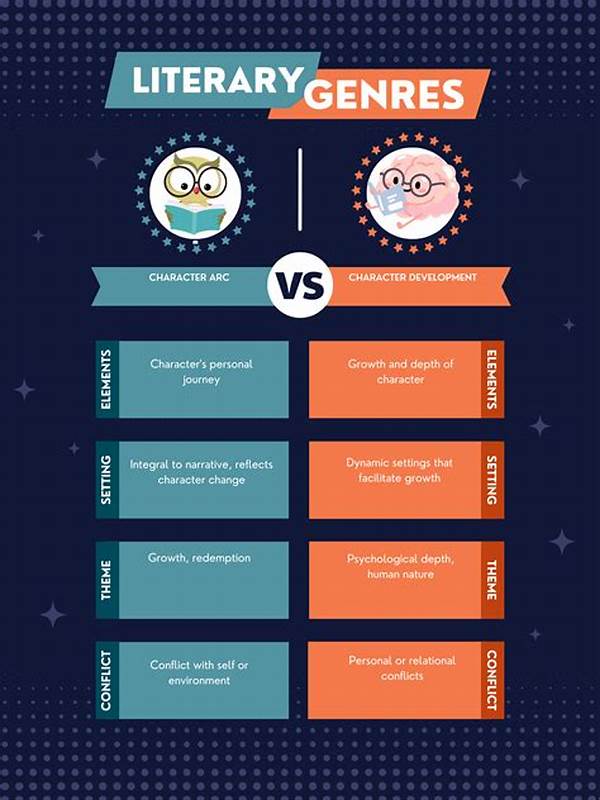Crafting complex characters is an art that every storyteller strives to master. The essence of a gripping narrative often lies in the journey of its characters. A one-dimensional character can sometimes fall flat, leaving audiences underwhelmed. On the contrary, developing multidimensional character arcs can transform your narrative, introducing depth and authenticity that resonate with readers on a more human level. But what does it take to create such dynamic arcs? Let’s explore.
Understanding Multidimensional Character Arcs
Creating a multidimensional character arc involves more than just defining character traits. It requires adding layers of complexity that mirror the intricacies of real life, where individuals evolve and change in unexpected ways. When developing multidimensional character arcs, consider how internal transformations match external actions. This synchrony is vital in making characters believable and relatable.
Character arcs should encapsulate growth, conflict, and resolution, providing an emotional connection with the audience. Imagine a protagonist whose worldview shifts radically due to events that challenge their long-held beliefs. Through this shift, they might undergo various emotional states, from denial to acceptance, illustrating a nuanced spectrum of human experience. Developing multidimensional character arcs allows for this captivating metamorphosis.
Elements of Multidimensional Character Arcs
1. Complexity of Traits: Developing multidimensional character arcs requires crafting characters with intricate layers of personality, where strengths are often intertwined with vulnerabilities.
2. Evolving Motivations: Characters should possess motives that evolve as the story progresses, ensuring they respond believably to the changing circumstances around them.
3. Emotional Depth: Developing multidimensional character arcs involves delving into the emotional landscape of characters, allowing audiences to empathize with their inner conflicts.
4. A Journey of Change: True character arcs feature tangible development, where characters transform significantly from the beginning to the end of the story.
5. Integration with Plot: Characters’ transformations should be seamlessly integrated into the storyline, ensuring that their growth is reflected in key plot developments.
The Art of Layering
Creating depth in character arcs isn’t just about complexity for complexity’s sake. In developing multidimensional character arcs, the art lies in layering these characters’ personalities in effective ways. This involves balancing contrasts within a character: juxtaposing desires against fears, or virtues against flaws. These layers must be orchestrated in a manner that feels organic.
Consider a narrative where the protagonist starts as an idealist and gradually morphs into a pragmatist. The events leading to this transformation should be carefully plotted. The character’s internal conflict of holding onto ideals while confronting harsh realities adds dimensions to their personality, making them resonate powerfully with audiences. It’s through this dance of contrasts that true multidimensional characters come to life.
Principles of Effective Character Arc Development
1. Consistency with Change: While developing multidimensional character arcs, ensure changes are rooted in the character’s established traits and experiences.
2. Relatability and Empathy: Characters should reflect relatable human experiences, prompting audiences to empathize with their journey.
3. Plausibility: The transformations in their arc must feel plausible given the story’s events, maintaining a natural progression.
4. Conflict as a Catalyst: Use conflict strategically to challenge characters, pushing them toward growth.
5. Subtlety: While transforming a character, subtle changes can be as powerful as dramatic transformations.
6. Influence of Relationships: Interactions with other characters can significantly affect a character’s arc, adding dimensions through relationships.
7. Symbolism and Themes: Tying character arcs with overarching themes enhances narrative coherence.
8. Utilizing Contradictions: Play with contradictions within a character to create internal tension and development.
9. Progressive Revelation: Gradually reveal aspects of the character throughout the story to maintain intrigue.
10. Emotional Resonance: Ensure that character arcs resonate emotionally with the audience, leaving them with a lasting impact.
Crafting Emotional Journeys
At the heart of any compelling character arc is the emotional journey. Developing multidimensional character arcs is about weaving a tapestry of emotions that mirror the highs and lows of real human experiences. Characters should not only face external obstacles but also grapple with internal dilemmas. This inner turmoil enriches their arcs, creating emotionally charged moments that captivate the audience.
The beauty of character development lies in its ability to foster a deep emotional connection with the audience. When a character’s arc feels genuine and relatable, it evokes empathy and reflection. Consider how audiences are drawn to characters whose vulnerabilities mirror their own, whose victories inspire, and whose transformations provide hope. Developing multidimensional character arcs is about cultivating these bonds and fostering a transformative experience.
Conclusion
Developing multidimensional character arcs remains a cornerstone of effective storytelling. By focusing on complexity, evolution, and emotional depth, writers can create characters that resonate with audiences long after the story concludes. This craft involves a delicate balance of planning and organic growth, ensuring characters with authenticity and dynamism. Exploring the nuances of character development, writers can unlock the true potential of their narratives, leaving a lasting impression on those who embark on the journey with them.
Summary
Mastering the art of developing multidimensional character arcs is pivotal in storytelling. It involves crafting characters that evolve with depth and authenticity, reflecting the multifaceted nature of human experiences. Through a harmonious blend of complexity, evolving motivations, and emotional depth, characters transform, providing audiences with a fulfilling journey. The seamless integration of these elements not only enhances character development but also elevates the narrative as a whole. By embracing the nuances of character arcs, storytellers can create engaging and enduring stories that resonate on a deeply personal level with their audience.
